SUPER FAST POUNDING MOCHI in NARA | How to Cook Yomogi Mochi at Home | Nakatanido
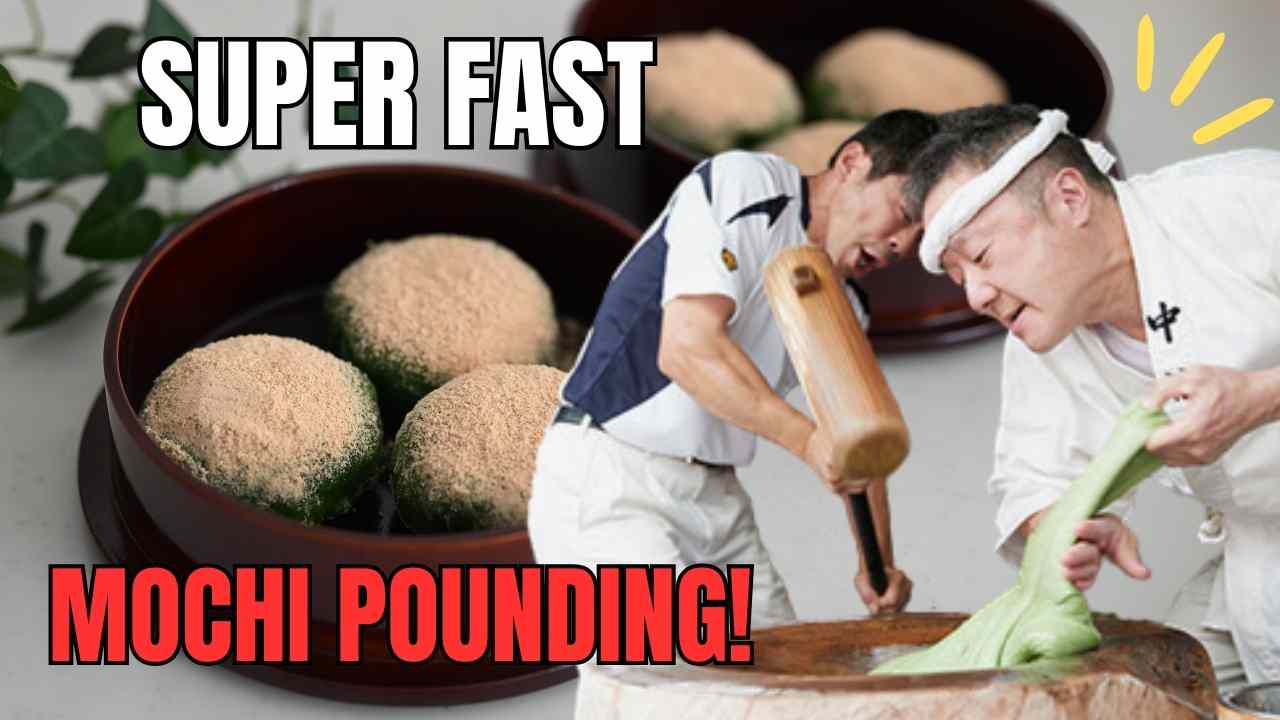
Making Yomogi Mochi at Home Inspired by Nakatanido’s Famous Technique
Have you ever heard of Nakatanido (中谷堂)?
It’s a renowned mochi shop in Nara, famous not just for its mochi but for the mesmerizing speed at which it’s pounded.
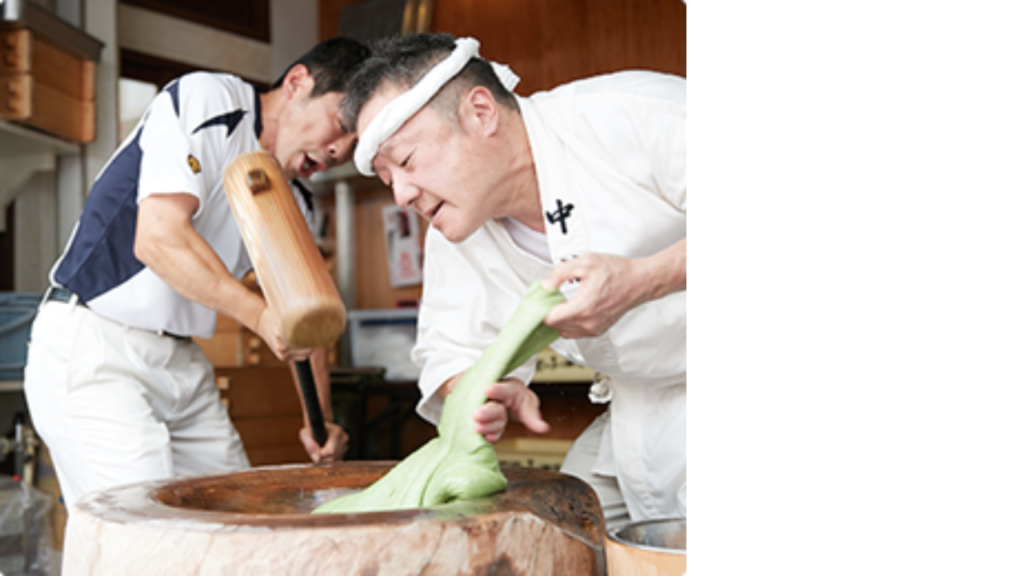
http://www.nakatanidou.jp/english/
This isn’t just for show; the rapid pounding is key to creating mochi’s incredibly soft, melt-in-your-mouth texture. Unlike the typical green tea flavors many associate with mochi, Nakatanido uses Yomogi, also known as Japanese mugwort, which gives the mochi a unique taste and appearance.
Discovering the Art of Mochi Making
Recently, I had the opportunity to witness this fast-paced mochi making up close and decided to take on the challenge of making Yomogi mochi at home. Are you ready for a kitchen workout? Let’s dive into the art of making this delightful treat.
What Is Yomogi?
Yomogi, scientifically known as Artemisia princeps, is a perennial plant indigenous to Japan and East Asia. It’s easily recognized by its deeply divided, green leaves and its propensity to grow wild not only in the country’s mountainsides but also in the roadside of residential areas.
Historically, Yomogi has been harnessed in a variety of ways, from culinary uses to traditional medicine and even in rituals and festivals.
Culinary Uses of Yomogi
In Japanese kitchens, Yomogi is celebrated for its earthy, slightly bitter flavor, which adds complexity and a splash of color to dishes. Most famously, it is incorporated into Yomogi mochi, where the herb infuses the sticky rice cake with its distinctive green hue and a subtle, aromatic taste. Yomogi can also be found in Japanese confectionery, teas, and even as a flavoring for bread.
Health Benefits of Yomogi
Beyond its culinary uses, Yomogi is a powerhouse of health benefits:
- Digestive Aid: Yomogi is known to stimulate digestion and soothe the stomach. Its natural properties can help alleviate gas, bloating, and indigestion.
- Rich in Antioxidants: The herb is packed with antioxidants, which protect the body against free radicals, reduce inflammation, and may lower the risk of chronic diseases.
- Women’s Health: Yomogi has traditionally been used to ease menstrual pain and regulate menstrual cycles. It’s also used to alleviate symptoms associated with menopause.
- Skin Care: Yomogi’s anti-inflammatory and antimicrobial properties make it an excellent choice for treating skin conditions such as eczema and itchiness.
- Immune Booster: The nutrients within Yomogi can help bolster the immune system, potentially leading to fewer illnesses and infections.
- Detoxification: Yomogi has detoxifying properties and is often used in baths to promote skin health and overall well-being.
Yomogi in Modern Wellness
As we rediscover natural remedies and holistic approaches to health, Yomogi is experiencing a renaissance. Its versatility and potent benefits make it a valuable addition to anyone’s wellness regimen. Whether you’re enjoying a Yomogi Mochi or soaking in a Yomogi bath, this humble herb is a gift from traditional Japanese practices that we’re only beginning to fully appreciate in our modern lives.
Gathering Yomogi
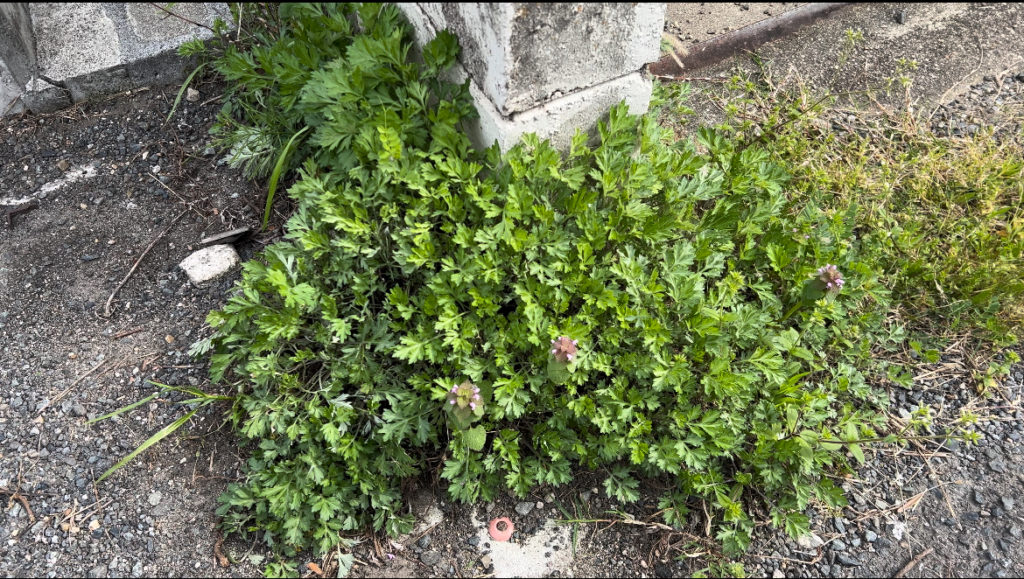

Now is the perfect time for Yomogi, which grows wild all over Japan during this season. It’s young and tender now—ideal for mochi.
I picked some right from a bush near my house!
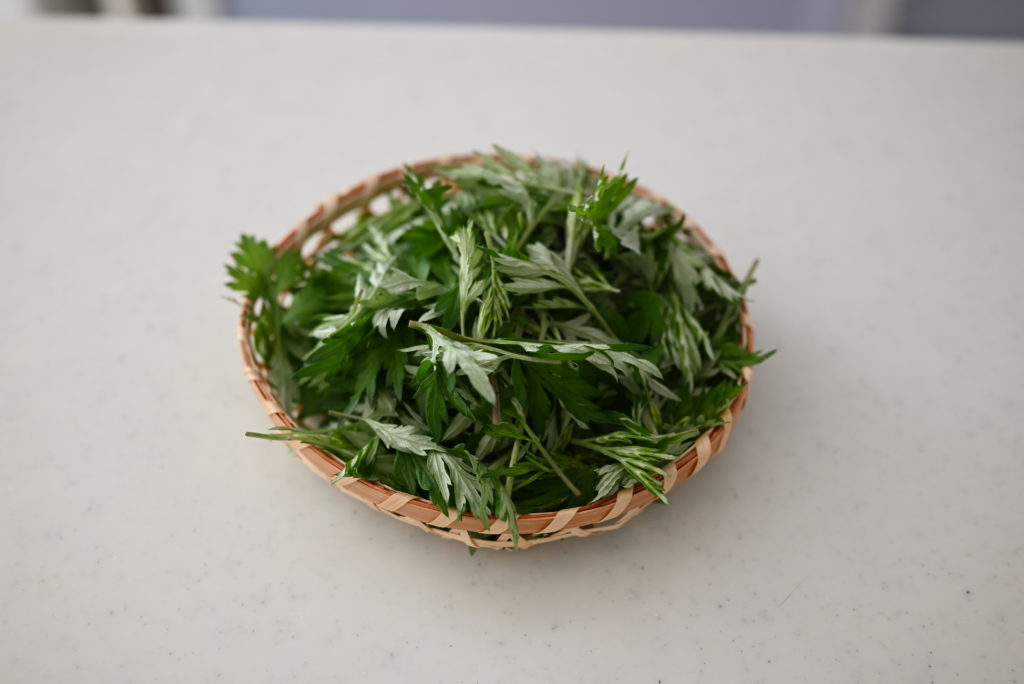
For those who can’t find fresh Yomogi, it’s also available dried online.
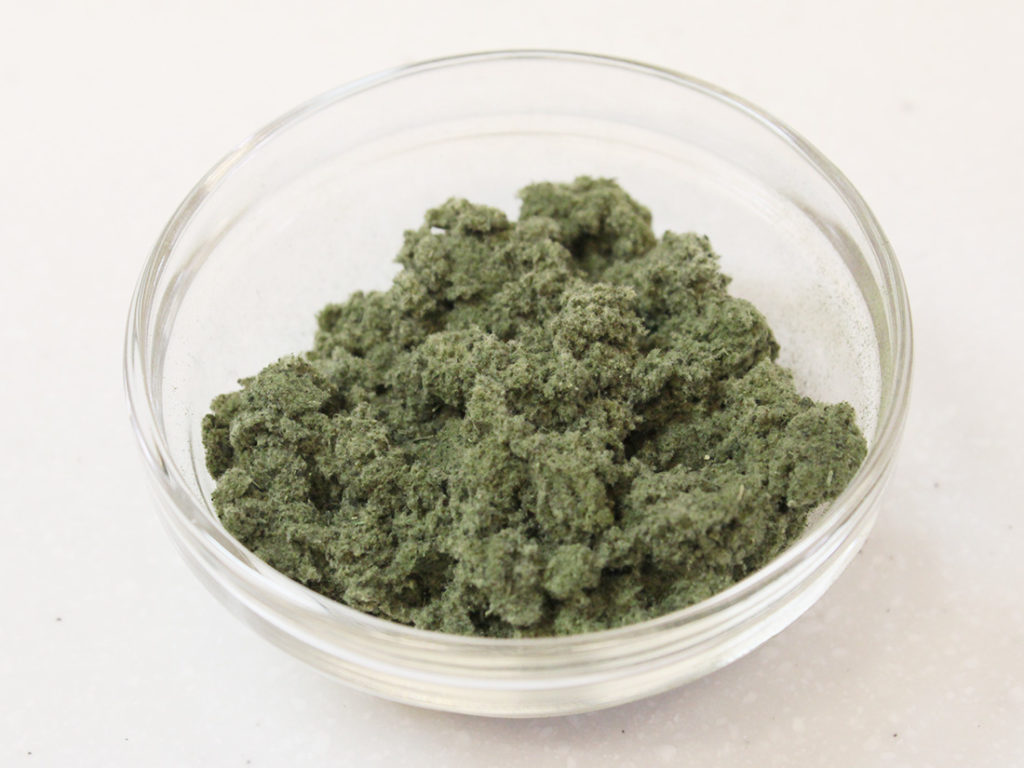
Preparing Yomogi
Wash the Yomogi leaves thoroughly, removing any unwanted debris.
Boil the leaves with a bit of baking soda; this helps remove any bitterness and softens the leaves.
Cook for about five minutes, then taste a leaf to ensure it’s tender.
Shock in an ice bath to stop the cooking process and preserve the vibrant green color.
Squeeze out all the moisture and finely chop into a paste.
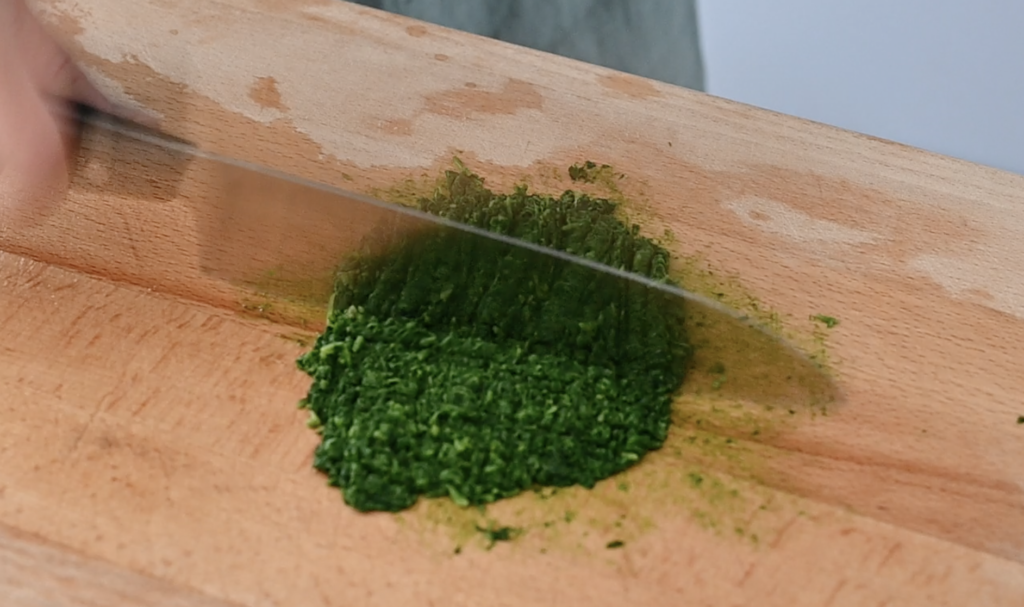
Making the Mochi Dough
Before you start with the dough, prepare your red bean paste by rolling it into balls. If it’s too moist, a quick zap in the microwave can dry it out a bit.
Mix rice flour, a touch of sugar (for softness), and lukewarm water into a dough.
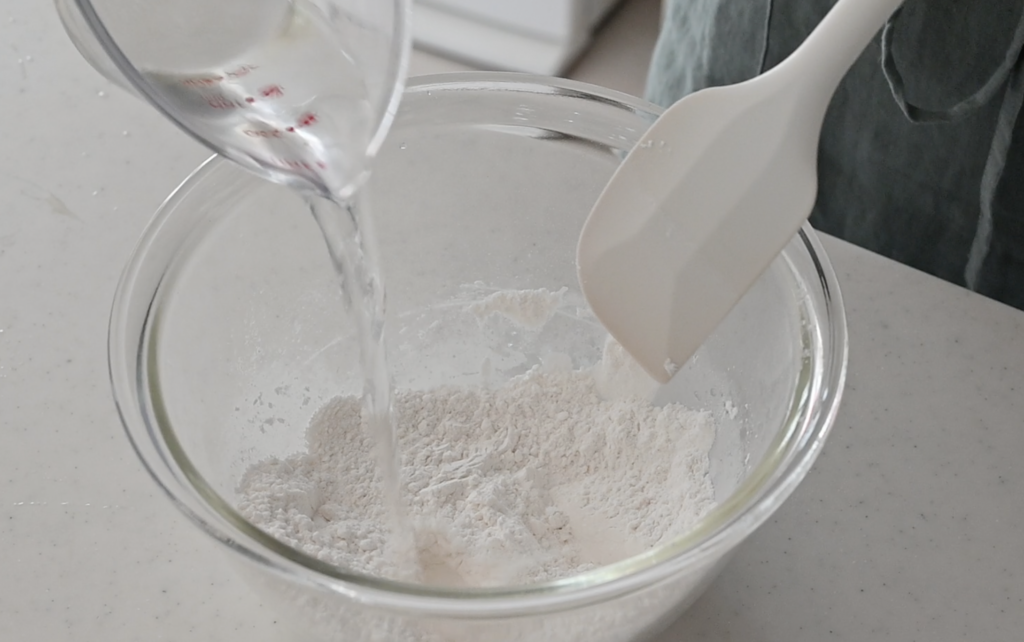
Microwave the dough covered in plastic wrap for a minute, stir, and repeat until it’s fully cooked and stretchy.
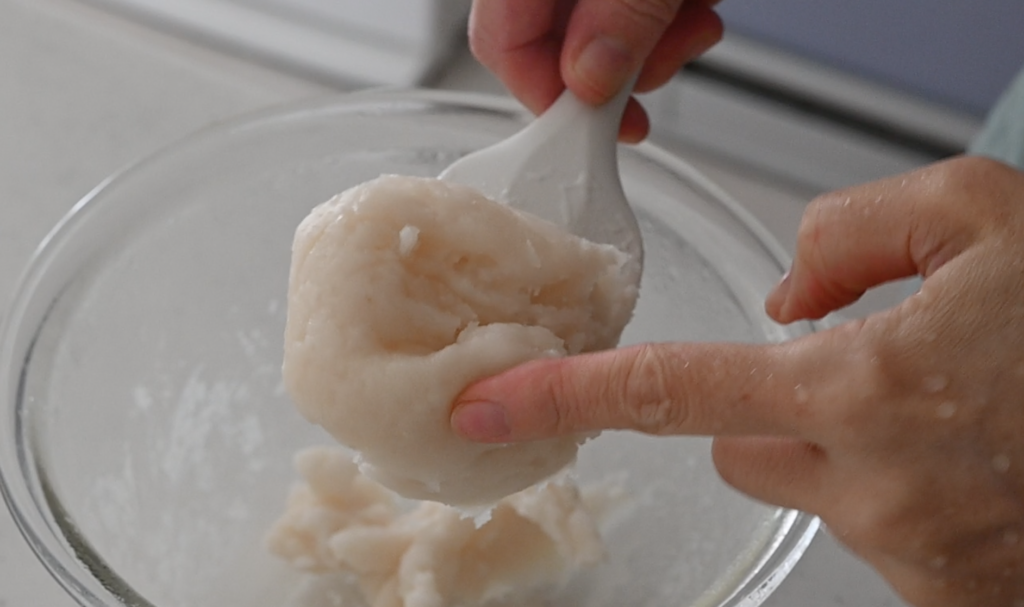
Combining the Ingredients
Place the Yomogi paste in a Suribachi (すり鉢:Japanese mortar). Its grooved interior is perfect for breaking down fibers.
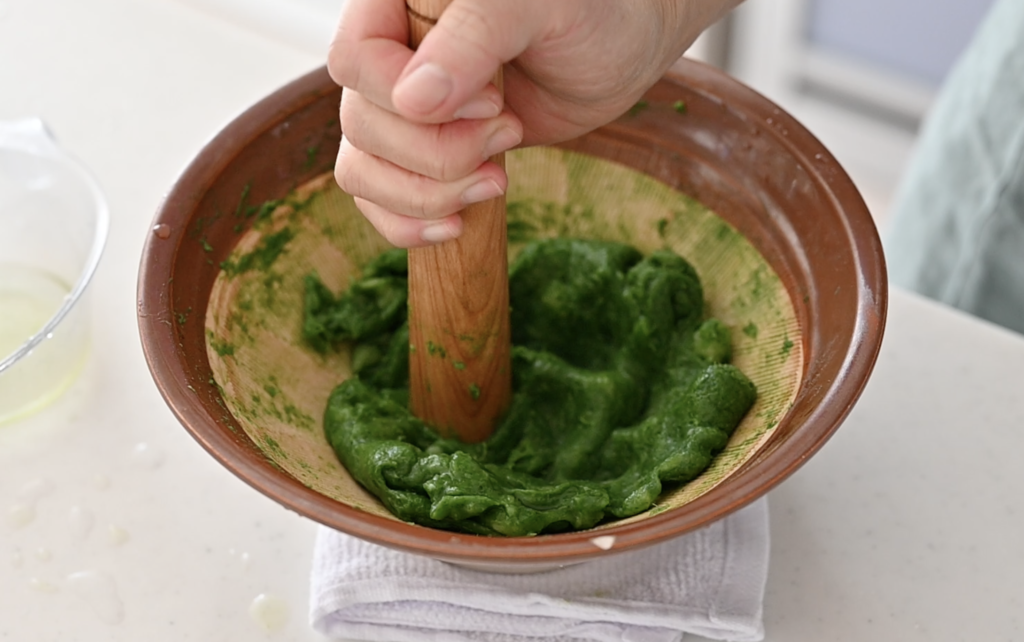
Pound the mochi dough in the Suribachi, using a pestle and occasional dips of water to prevent sticking, until it becomes smooth and elastic.
Divide the dough, flatten each piece (thinner on the edges), place a ball of red bean paste in the center, and carefully wrap the mochi around it.
Final Touches and Serving
Dust the finished mochi with Kinako (roasted soybean flour) for an extra layer of flavor. The result is a stretchy, velvety mochi that not only tastes amazing but also brings the essence of Nakatanido into your home.
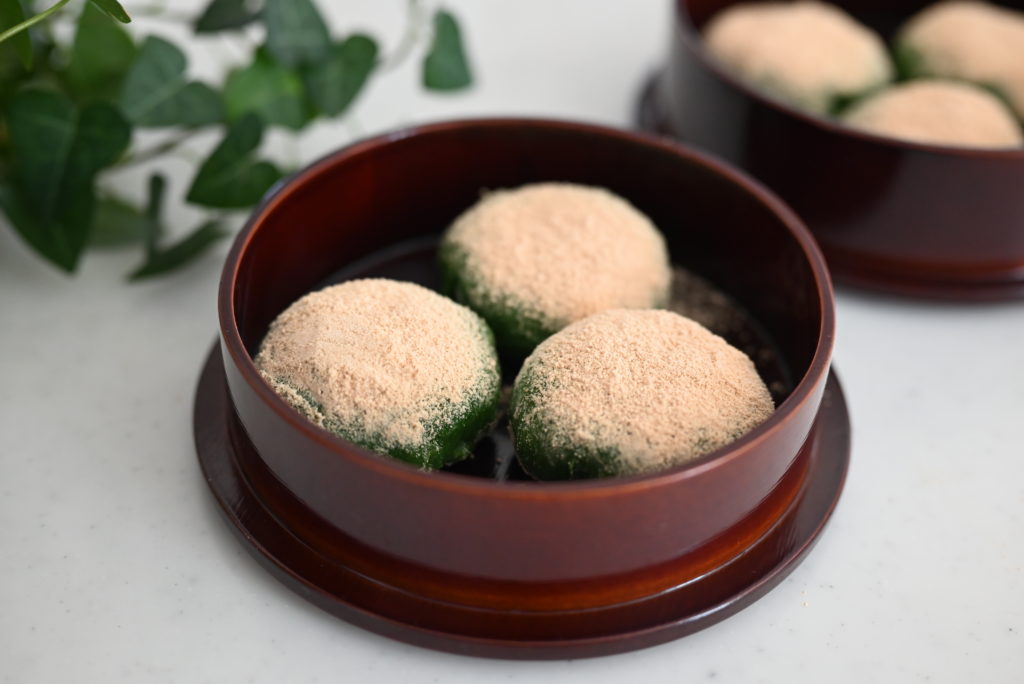
The Pure Joy of Homemade Mochi
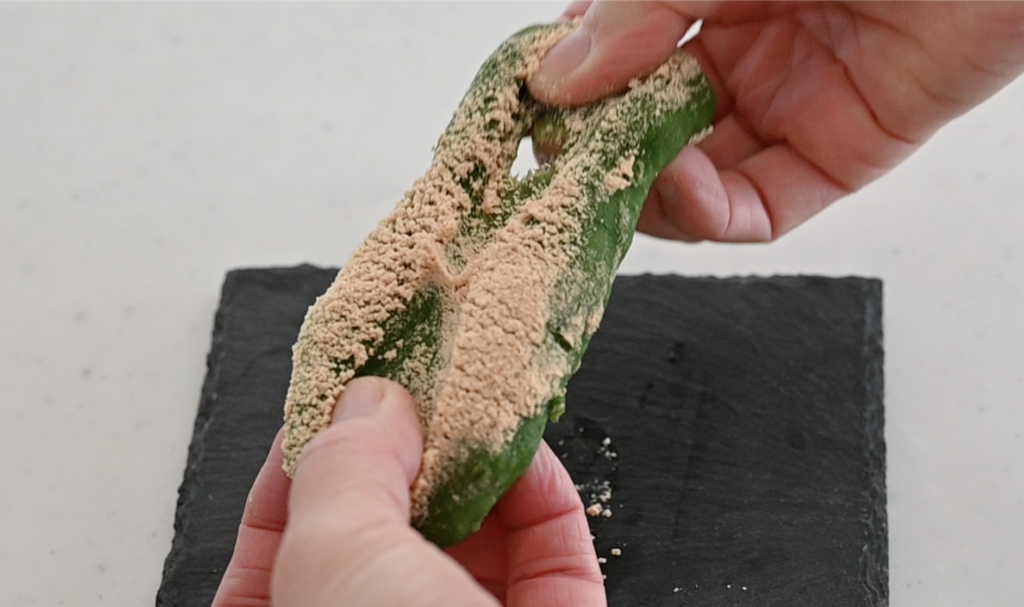
Making Yomogi mochi at home can be a fun and rewarding experience. It melts in your mouth with a comforting, earthy flavor that’s truly unparalleled. If you ever find yourself in Nara, don’t miss out on experiencing this at Nakatanido. Until then, enjoy making and eating your homemade mochi, and let me know how your mochi turns out!
Yomogi Mochi
Equipment
- 1 frying pan
- 1 Microwave safe bowl
Ingredients
Yomogi Paste
- 30~40 g Fresh Yomogi
- or Dried Yomogi Follow package instruction for the amount
Mochi Dough
- 75 g Rice Flour
- 25 g Mochiko
- 10 g sugar
- 100 g lukewarm
Red Bean Paste
- 175 g (6 oz) Red Bean Paste
Kinako
Instructions
Yomogi Paste
- Wash well the Yomogi. Bring a pan of water to a boil, add baking soda to remove scum and make it soft. Cook for 5 mins on medium until soft. Drain and release in an ice bath to stop cooking and reserve the vibrant green color.Squeeze out all the moisture and then chop into a paste.
Red Bean Paste
- Roll red bean paste into a ball and set it aside. ※If you use canned red bean paste, it is too loose and contains too much moisture, so cook it in a microwave to evaporate the moisture.
Mochi Dough
- Combine the flour and sugar, mix with lukewarm water, and mix into a dough. Cover with plastic, cook in a microwave for a minute, and then mix to even out the dough.Cook it again in a microwave for a minute. Mix once again and cook it once more.
- In a Suribachi bowl, put prepared Yomogil. The Japanese mortar has fine lines that allow it to break the fibers. Grind Yomogi with a pestle until smooth for a few minutes.
- Transfer the mochi dough to Suribachi Mortal, Pound with a pestle, like Nakatani san does, until you get a smooth mochi dough. I use a spatula as if he is flipping the mochi dough.Dip your pestle in water occasionally to avoid sticking, and keep pounding until you get a nice stretchy mochi! The more you pound the mochi, the more stretchy and velvety mochi.
Assemble
- Divide into seven pieces and shape into a ball.Flatten the mochi; the edges should be thinner than the center. Then, put the red bean paste in the center and wrap it all around.Dust with kinako powder, and there you have it!
